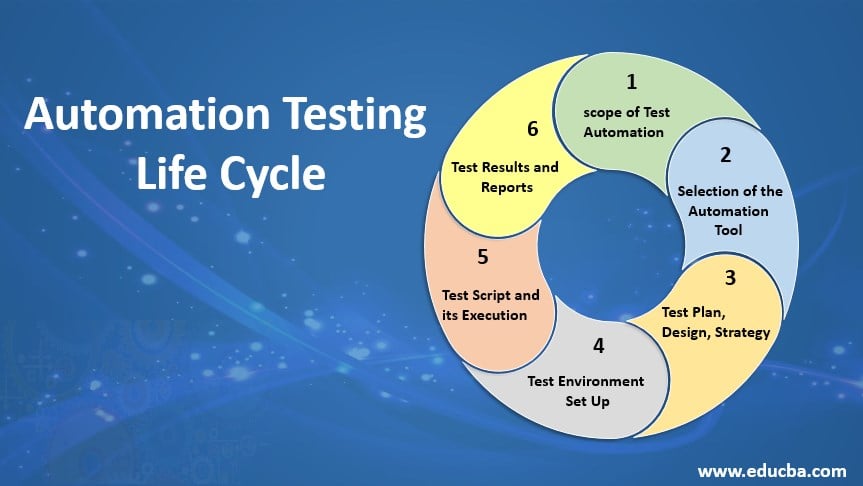Automation Testing: Secret Steps to Enhance Development Lifecycles
Automation Testing: Secret Steps to Enhance Development Lifecycles
Blog Article
From Handbook to Automated Testing: A Comprehensive Overview to Transitioning Efficiently and Properly
In the realm of software application testing, the change from manual to automated procedures has become a progressively essential shift for companies seeking to enhance effectiveness and accuracy in their testing practices. The journey from manual to automated screening is not without its difficulties, but when come close to strategically and with a clear plan in mind, the advantages can be considerable.
Advantages of Automated Checking
Automated testing provides countless benefits, improving effectiveness and precision in software advancement procedures. One primary advantage is the substantial reduction in screening time. Automated tests can be run concurrently on numerous gadgets and running systems, significantly quickening the testing phase contrasted to hands-on testing. This increased efficiency permits faster comments on the top quality of the software application, allowing developers to recognize and address concerns promptly.
In addition, automated testing ensures a higher level of accuracy in discovering defects. Since automated examinations follow predefined manuscripts, human error is reduced, bring about even more trustworthy examination outcomes. Consistency in screening is also boosted, as automated examinations carry out the exact same actions exactly each time they are run. This uniformity is crucial in making certain that all capabilities of the software application are extensively tested, lowering the chance of unnoticed bugs slipping through to production.
Picking the Right Devices

First of all, analyze your purposes and requirements. Comprehend the scope of your job, the technologies involved, and the ability of your group. This analysis will assist you figure out the capabilities and functions you need in your testing tools.
Second of all, think about the compatibility of the tools with your existing processes and systems. Smooth integration with your present software growth lifecycle is crucial to ensure a smooth change to automation.
Additionally, assess the scalability and flexibility of the tools. As your testing requires develop, the tools must have the ability to adjust and suit adjustments efficiently.
Last but not least, element in the assistance and area around the tools. Robust assistance and an active user neighborhood can supply valuable sources and support when implementing automated testing. By thoroughly considering these aspects, you can select the right tools that line up with your needs and established the stage for an effective change to automated screening.
Writing Efficient Examination Manuscripts

When crafting test scripts, it is necessary to take into consideration the details requirements of the software program being evaluated and ensure that the manuscripts attend to all critical performances. Descriptive and clear calling conventions for examination manuscripts and test instances can boost readability and maintainability. In addition, integrating mistake handling mechanisms within the examination scripts can aid in determining and resolving concerns immediately.
Furthermore, arranging test scripts into modular components can improve reusability and scalability, minimizing redundancy and boosting effectiveness in examination script upkeep. Regular reviews and updates to test manuscripts are essential to keep pace with progressing software demands and capabilities. By complying with these concepts, testers can create robust and efficient test manuscripts that contribute considerably to the success of automated testing procedures.
Integrating Automation Into Workflows
By seamlessly integrating automated screening tools like Selenium or Appium right into the software application advancement lifecycle, groups can achieve faster comments on code changes, leading to quicker pest discovery and resolution. This assimilation permits for constant screening throughout the growth process, making certain that any type of problems are identified early on, resulting in greater software application high quality. Appropriate integration of automation tools needs cooperation in between development, testing, and procedures teams to official statement establish a unified process that enhances efficiency and performance in providing top quality software program items.
Guaranteeing a Smooth Change
Efficiently transitioning to automated testing includes careful planning and cautious implementation to make the most of and lessen disruptions performance in the software growth procedure - automation testing. To ensure a smooth shift, it is important to begin by performing a thorough evaluation of the current testing procedures and determining areas where automation can bring one of the most significant advantages. Engaging with all stakeholders at an early stage in the procedure, consisting of programmers, testers, and task supervisors, is critical for garnering assistance and buy-in for the automation effort
Interaction is crucial during this transition stage. Clear communication of the goals, advantages, and expectations of automated screening helps to handle any resistance or concerns that may occur. Additionally, offering adequate training and resources for group participants to upskill in automation devices and methods is crucial for making certain important link a successful change.

Final Thought
In verdict, transitioning from guidebook to automated testing supplies numerous benefits, consisting of enhanced efficiency and reliability. By picking the suitable devices, creating effective test manuscripts, and integrating automation seamlessly into workflows, companies can guarantee a successful and smooth change. It is vital to embrace automation as an important property in software testing processes to boost general top quality and productivity.
In the world of software program screening, the shift from manual to automated processes has actually come to be a significantly essential change for organizations seeking to boost effectiveness and accuracy in their testing techniques. Automated tests can be run concurrently on numerous gadgets and running systems, dramatically speeding up the screening phase contrasted to hands-on testing. Consistency in testing is additionally boosted, as automated tests implement the same actions specifically each time they are run.To guarantee the successful execution of chosen testing devices, the development of efficient examination scripts plays a crucial duty in confirming the functionality and efficiency of automated procedures - automation testing. By adhering to these principles, testers can produce reliable and robust examination manuscripts that add significantly to the success of automated testing procedures
Report this page